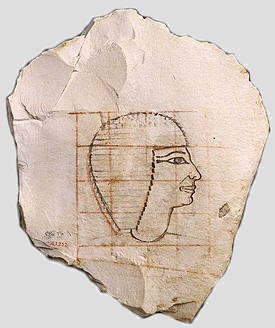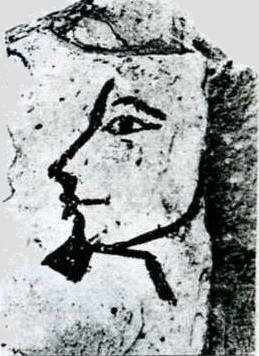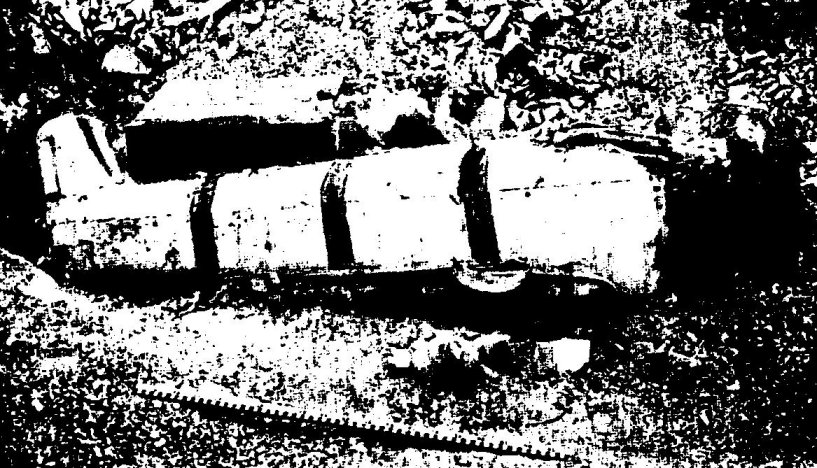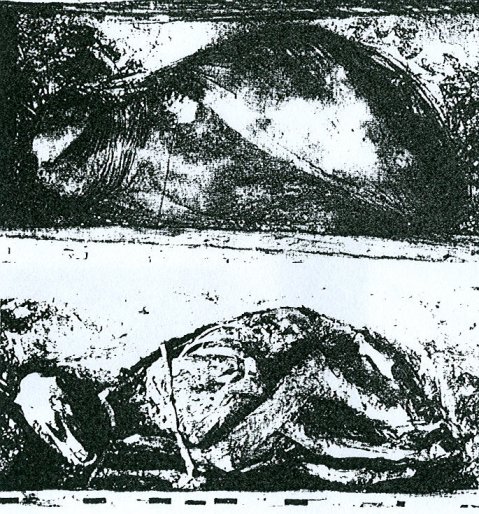|
Senenmut |
last update: 01.01.2010 |
|
Finds around TT71 |
| The debris between the forecourt of TT71 and the tomb of his parents contained numerous small finds among them fragments of statues (some were just pictured and then thrown away), ostraca and name stones. |
 |
 |
| Two ostraca from the debris below TT71. Both show heads, most likely drafts prepared during the decoration of the tomb TT71. The left one clearly depicts Senenmut ( 22 x 18.5 x 3 cm, today in the Metropolitan Museum of Art, New York, no. 36.3.252.), the right one shows a man with beard (sketch by Hayes; 16 x 14.5 x 8 cm, today in the Metropolitan Museum of Art, New York, no. 36.3.253). |
| In the slope covered with rock debris - under the forecourt of TT71 - additional funerals were found. Some of these burials were just put into a gully formed by the bedrock and then covered with the debris from TT71 which gradually filled up the gully. Only for the parents of Senenmut and an unknown lady a chamber was cut into the rock. |
| However, the relation to Senenmut is unknown since no inscriptions were found together with these burials. The following burials were discovered: that of a young woman, who was rolled into a mat, and that of an older woman, who was buried in a simple wooden coffin. The older woman carried a scarab showing the name and the titles of "God's Wife of Amun", Neferu-Ra. This points to the fact that Hatshepsut had already taken the full title(s) of the king (after Meyer) some time before of work at TT71 was started, because only thereafter Neferu-Ra is titled as a "God's wife". In addition, a man was found in an uninscribed coffin. |
Furthermore, the anthropomorphic coffin of a singer called "Harmose" was found (Porter, Moss, 1973; Hayes, BMMA, 1937). Beside lay his lute which was nearly intact, a headrest, and a household box which had been converted into a canopic chest. However, the box only contained a pot of unguent and mummy wrappings but no viscera. |

| Above the simple coffin of the singer Harmose (photo taken from: Hayes, BMMA, 1937) |
| Additionally, in the slope under the forecourt of TT71 the oldest complete Egyptian skeleton of a riding horse was found. The horse was not mummified however, it was completely wrapped before it was buried in a large (height of the shoulders > 140 cm) wooden coffin. On its back something was found that might have been a saddle or a covering: a rectangular cloth or leather with thicker lower surface that was fastened by two tapes on its front and backside around the neck and the belly. Due to the site of its discovery it is assumed that Senenmut was most likely the owner, since the possession of a horse was clearly a preciousness at that time and probably also an honor. |

| The horse found below TT71, wrapped (above) and unwrapped (below); (photo taken from: Hayes, BMMA, 1937) |